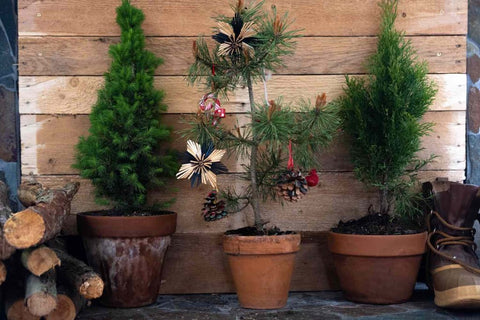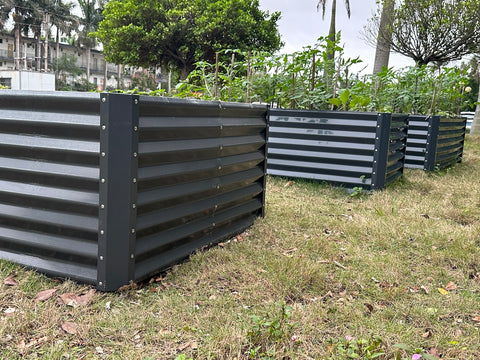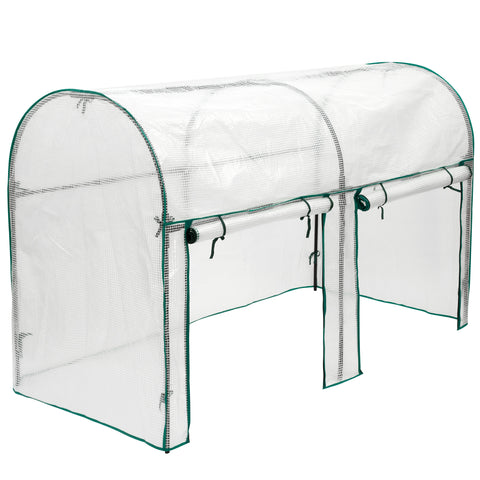As winter blankets the landscape in a serene white embrace, gardeners and landscape enthusiasts face the challenge of safeguarding their irrigation systems against the frosty grip of the season. Winterizing your irrigation system is a crucial step in ensuring its longevity and functionality come spring. In this blog, we'll delve into the art of winterizing, exploring the importance of the process and providing practical tips to keep your irrigation system frost-free during the chilly months.The following content also has some reference value for raised garden beds.
The Need for Winterizing Irrigation Systems

- Protecting Against Freezing Damage:
The primary goal of winterizing irrigation systems is to shield them from freezing temperatures. Water left in the pipes can expand when it freezes, causing pipes to burst and resulting in costly repairs come spring.
- Preserving System Components:
Winterizing is not only about preventing pipe damage but also about preserving the various components of your irrigation system. This includes valves, sprinklers, pumps, and other intricate parts that, if exposed to freezing water, can suffer irreversible damage.
- Ensuring Efficient Spring Start-Up:
Properly winterizing your irrigation system sets the stage for a seamless spring start-up. By preventing damage during the winter months, you ensure that your system is ready to deliver efficient and effective watering as soon as the growing season begins.
Tips for Winterizing Your Irrigation System
- Turn Off the Water Supply:
Start the winterizing process by turning off the water supply to your irrigation system. Locate the main shut-off valve and close it to prevent water from flowing into the system during freezing temperatures.
- Drain the System:
Thoroughly drain the water from your irrigation system to eliminate any remaining moisture that could freeze. This can be done using manual drain valves or automatic drain valves, depending on the design of your system.
- Blow Out the Lines:
Use compressed air to remove any remaining water from the pipes. This is a critical step, especially for systems with underground pipes. Begin with the zone farthest from the compressor and gradually work your way toward it, ensuring that each section is thoroughly cleared of water.
- Adjust the Pressure:
When blowing out the lines, it's crucial to adjust the air pressure according to the specifications of your irrigation system. High-pressure air can damage the system, so consult the manufacturer's guidelines or seek professional advice to determine the appropriate pressure setting.
- Disconnect and Store Hoses:
Disconnect garden hoses from outdoor faucets, drain any remaining water and store them in a sheltered location. This prevents hoses from freezing and cracking, ensuring they remain in good condition for the next growing season.
- Insulate Above-Ground Components:
Wrap above-ground components, such as backflow preventers and above-ground pipes, with insulation. This extra layer provides protection against extreme cold temperatures and minimizes the risk of damage.
- Protect Valves and Controllers:
If your irrigation system includes valves and controllers, these components need special attention. Insulate them or use covers designed for winter protection. This safeguards sensitive electronic parts from the harsh winter elements.
- Consider Professional Services:
For those unfamiliar with the intricacies of irrigation systems, or for larger and more complex systems, it's advisable to seek professional winterization services. Irrigation professionals have the expertise and equipment to ensure a thorough winterization process.

Embracing Smart Irrigation Technology
- Install Freeze Sensors:
Consider adding freeze sensors to your irrigation system. These devices automatically shut off the system when freezing temperatures are detected, providing an extra layer of protection against potential damage.
- Explore Smart Controllers:
Upgrade to smart irrigation controllers that allow remote monitoring and control of your system. Some smart controllers offer freeze-prevention features, enabling users to receive alerts and take action to prevent freezing remotely.
- Invest in Weather-Based Controllers:
Weather-based irrigation controllers, also known as ET controllers, adjust watering schedules based on current weather conditions. These controllers can automatically reduce irrigation during cold periods, minimizing the risk of freezing.
DIY Winterizing Checklist
- Gather Necessary Tools:
Before starting the winterizing process, ensure you have the necessary tools and equipment, including a compressor, appropriate air fittings, insulation materials, and any other tools specified by your irrigation system's manufacturer.
- Create a System Map:
Familiarize yourself with your irrigation system and create a map that outlines the location of valves, pipes, and other components. This map can be a valuable reference during the winterization process.
- Shut Off the Water Supply:
Locate the main shut-off valve for your irrigation system and turn it off. This prevents water from entering the system during winter.
- Open Manual Drain Valves:
If your system has manual drain valves, open them to allow water to drain from the pipes. Begin with the zone farthest from the shut-off valve and work your way back.
- Activate Automatic Drain Valves:
For systems equipped with automatic drain valves, activate them to release any remaining water. Follow the manufacturer's instructions for your specific system.
- Disconnect and Drain Backflow Preventers:
Disconnect and drain backflow preventers to prevent damage from freezing. Consult your system's manual or seek professional advice if you're unsure about this process.
- Blow Out the Lines:
Use compressed air to blow out the irrigation lines. Begin with the zone farthest from the compressor, gradually working your way toward it. Adjust the air pressure according to the specifications of your system.
- Insulate Above-Ground Components:
Wrap above-ground pipes, backflow preventers, and other components with insulation materials. This adds an additional layer of protection against freezing temperatures.
- Protect Valves and Controllers:
Insulate valves and controllers or use covers designed for winter protection. Ensure that electronic components are shielded from the cold.
- Store Tools and Equipment:
After completing the winterization process, properly store tools and equipment in a dry and secure location. This ensures that they remain in good condition for future use.

Preparing for Spring:
- Schedule a Spring Start-Up:
As winter fades and the gardening season approaches, schedule a spring start-up for your irrigation system. A professional service or a thorough DIY inspection can identify any issues and ensure that your system is ready for action.
- Check for Damage:
Inspect all components of your irrigation system for potential damage caused by winter weather. Search for cracks, leaks, or indications of wear and tear. Address any issues promptly to avoid further damage.
- Test the System:
Once your irrigation system is up and running, conduct a comprehensive test to ensure that each zone is functioning correctly. Check for proper water distribution, adjust sprinkler heads if needed, and make any necessary adjustments to optimize performance.
- Adjust Watering Schedules:
As the weather warms up, adjust watering schedules based on the specific needs of your plants. Be mindful of local watering restrictions and guidelines to promote water conservation.
Conclusion
Winterizing your irrigation system is a proactive and essential step in protecting your investment and ensuring a smooth transition into the growing season. By embracing the art of winterization and following these practical tips, you can safeguard your irrigation system against freezing temperatures and potential damage. As you bid farewell to winter and welcome the arrival of spring, your garden will thank you with vibrant blooms, healthy plants, and a flourishing landscape. Stay chill-proof and enjoy the beauty that a well-maintained irrigation system brings to your outdoor sanctuary. Happy gardening!









